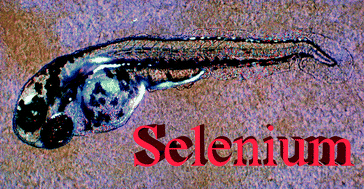Distribution of selenium in zebrafish larvae after exposure to organic and inorganic selenium forms†
Abstract
Selenium is an essential micronutrient for many organisms, and in vertebrates has a variety of roles associated with protection from reactive oxygen species. Over the past two decades there have been conflicting reports upon human health benefits and detriments arising from consumption of selenium dietary supplements. Thus, early studies report a decrease in the incidence of certain types of cancer, whereas subsequent studies did not observe any anti-cancer effect, and adverse effects such as increased risks for type 2 diabetes have been reported. A possible contributing factor may be that different chemical forms of selenium were used in different studies. Using larval stage zebrafish (Danio rerio) as a model organism, we report a comparison of the toxicities and tissue selenium distributions of four different chemical forms of selenium. We find that the organic forms of selenium tested (Se-methyl-L-selenocysteine and L-selenomethionine) show considerably more toxicity than inorganic forms (selenite and selenate), and that this appears to be correlated with the level of bioaccumulation. Despite differences in concentrations, the tissue specific pattern of selenium accumulation was similar for the chemical forms tested; selenium was found to be highly concentrated in pigment (melanin) containing tissues especially for the organic selenium treatments, with lower concentrations in eye lens, yolk sac and heart. These results suggest that pigmented tissues might serve as a storage reservoir for selenium.


 Please wait while we load your content...
Please wait while we load your content...